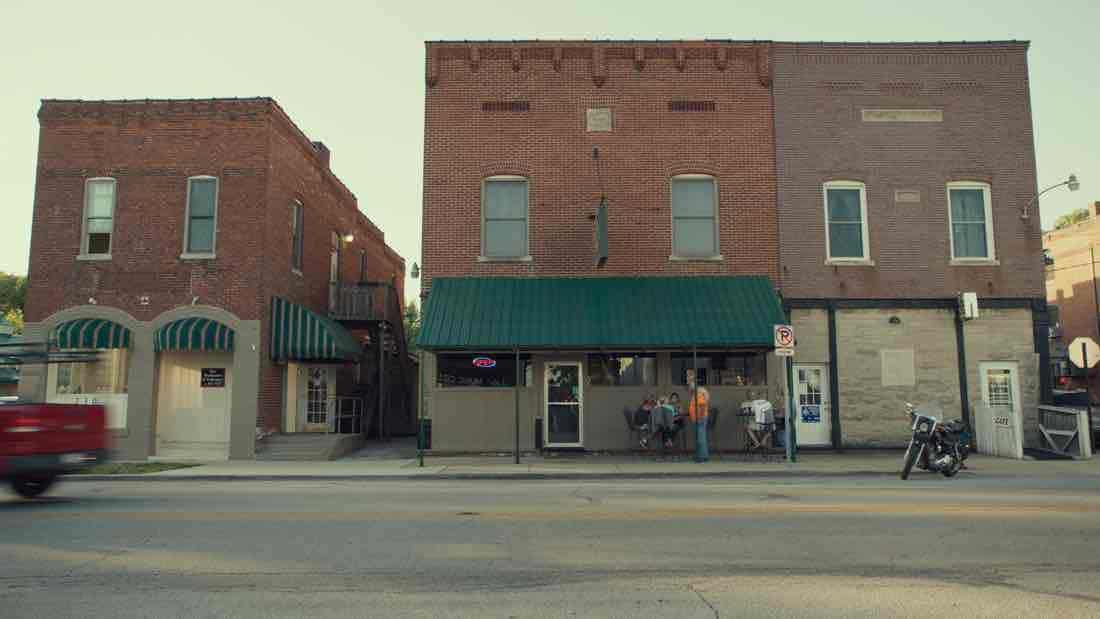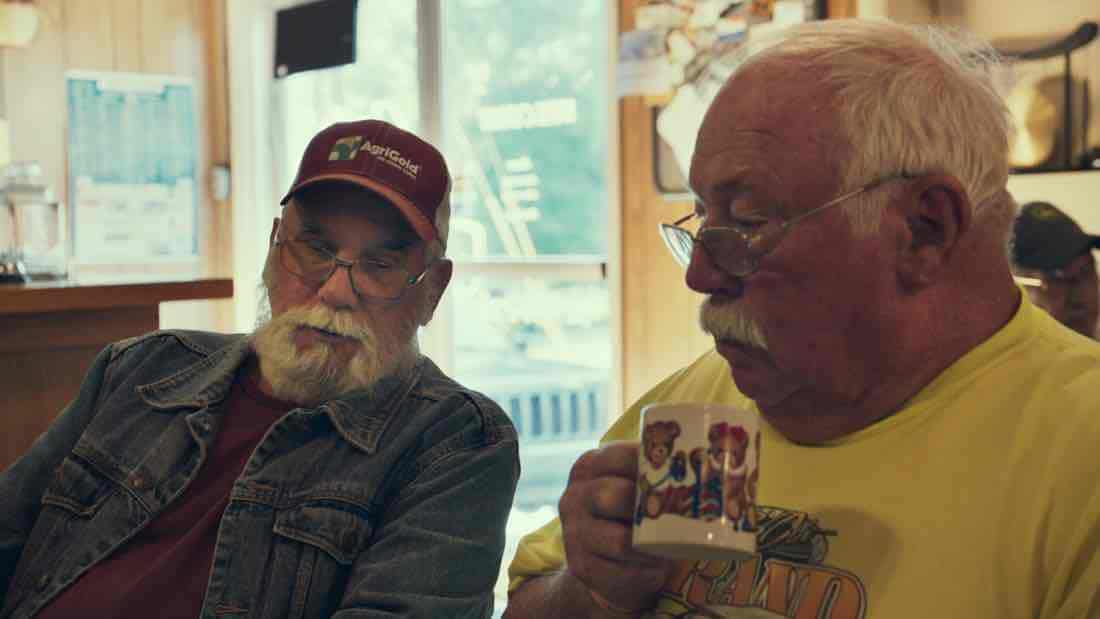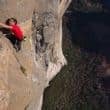In our fourth interview with Frederick Wiseman in as many years, he discusses his latest film, Monrovia, Indiana, collaborating with his longtime cinematographer, how he approaches theatre vs documentary film, and the shot he thinks ‘looked cool’.

Frederick Wiseman’s recent films have been odes to the joys and rewards of learning, asking questions, and finding new ways to think. He’s taken us into major intellectual institutions of higher learning (At Berkeley), of the arts (National Gallery), and of central meeting grounds for cultural and knowledge dissemination and discussion (Ex Libris: The New York Public Library). These were places that celebrated curiosity, diversity, and change.
So it came as a surprise that his most recent film, Monrovia, Indiana, is about a small, majority white and Christian, blue collar town in middle America. Essentially, Monrovia represents the antithesis of everything Wiseman has shown us he cares about in the last few years. Monrovia, Indiana feels more geographically exploratory, taking us into strange and alien places, like a supermarket full of fattening and goopy foods, or a gun store with wall-to-wall slogans about the greatness of firearms coupled with American flags.
Gone are the long sequences of lectures, discussions, and Q&As, replaced by montages to introduce us to each of these new locales. The few sequences in Monrovia, Indiana that do show an extended discussion tend to be about something workaday like having enough fire hydrants, rather than abstract concepts.
Whereas films like At Berkeley and Ex Libris involved people talking and thinking and thus defining what their spaces mean and what activities they do, Wiseman presents the town of Monrovia, Indiana as the place that defines its people. When Wiseman turns his camera to the walls and spaces of Monrovia, he finds slogans about guns, family, faith, and more — it’s a place visibly telling itself the story of who it is.
When we venture into the local grocery store, we watch a montage of the prepared foods, each shown as a still for a couple of seconds — all goopy and full of fat — as if Wiseman is saying, “Can you believe what the people here eat?!” When he takes us down the aisles, we see large stacks of meat in the fridge and obese customers surveying the available food.
Some of the film’s longest sequences — at a wedding, at a Freemason ceremony — feature people earnestly reciting set speeches from a binder. These aren’t people speaking from the heart; the speeches are institutional, repeated by rote for ceremony. The picture in Monrovia, Indiana is of a community infected with groupthink, so uniform and cut off from anything different that they’d never consider describing it that way.
If you asked Wiseman about this film, that’s not what Frederick Wiseman would tell you. I’ve interviewed Wiseman four times now (on National Gallery, In Jackson Heights, and Ex Libris), and each time, it’s been a challenge to figure out what questions will excite him most and lead to the most revealing answers. I learned early on that he’s most animated when he gets to talk about nuts and bolts decisions he makes, especially in the edit: how long to hold on a scene and why, how he assembles sequences, how he thinks about sound. But if you ask about the broader themes and ideas of his films, it can sometimes feel like pulling teeth.
What I didn’t understand until this interview was that this isn’t Wiseman being difficult; he isn’t avoiding talking about what the movie means because he’d rather you just watch the thing he spent a year editing. Instead, he experiences his films in a fundamentally different way than audiences or critics do.
Wiseman’s analysis of his own footage and film is all about how to connect one scene to the next, how to represent his experience accurately, how to condense a one-hour scene into a ten-minute sequence. For him, the meaning that this technical work yields is all instinctive. More than once during this interview, Wiseman explained to me that he “doesn’t think in those terms.” It wasn’t an insult or a complaint, just an acknowledgement of a difference of perspective.
In this interview, Wiseman talks about how he collaborates with his long-time cinematographer John Davey, how the differences I noticed in Monrovia, Indiana compared to his other recent films were really just a product of what he observed (this is a different place, so the material he had to work with was consequently different, too), and which shot in the film just “looks cool.” He also discusses how working as a theatre director is the reverse process of working as a documentary filmmaker.
7R: You’ve been making films with your cinematographer John Davey for almost 30 years now. How has your long-term collaboration has impacted both how you approach the filming and what you shoot?
FW: We have signals. John’s got one eye on me, and I’ve got one eye on him and one eye on what’s going on. I pick out what gets shot. I lead with the mic. We have various signals that we use: very simple signals to stop, start shooting, or change positions. We look at rushes together every night and talk about how things were shot and how they might have been shot if we’re in a similar situation another time. We’re constantly talking to each other. It’s a very effective collaboration.
7R: How does running the sound yourself impact that collaboration?
FW: Because I’m picking out what gets shot, and I make some initial judgement as to whether or not I want a sequence on the basis of the content. I like doing the sound and my reaction to the sequence is important.
Also, if I was just standing around someone else would be doing the sound, adding an additional person to the crew, which would be an interference. To make these movies, you have to have good picture, good sound, and you have to edit it properly.
7R: When you are watching the rushes, what kind of things are you discussing?
FW: We’re discussing the way it was shot, would any other choices have been better, and also what choices would not have been as good. We’re talking about how we might do it in a similar situation; while no two situations are alike, we do shoot a lot of meetings. In Monrovia, particularly in the town council, there’s a fairly standard way, for us in any case, of doing that, that you follow the speaker.
At the same time, because I edit the films myself, I know what kind of shots are needed in the editing in order to condense the sequence. So I’m always concerned about getting wide shots, getting wide shots behind the person who’s chairing the meeting, getting wide shots from other positions, getting cutaways of people who are listening that I can use to reduce the sequence in length. If I don’t have silent cutaways, I don’t have the shots to reduce the sequence in length. There’s practically no sequence in any of the films that appears in its original length.
The town council meetings in Monrovia went on for an hour and a half or two hours. The president’s cabinet meetings in At Berkeley went on for an hour and a half. The ministry meetings in Ex Libris went for an hour and a half or two. So I know I’m going to need silent shots of different people with different expressions on their faces and looking in different directions simply in order if I’m going to have the material to edit the sequence if I choose to use it. That’s all in my mind in making the choices of who to shoot and when to shoot it.
7R: In Monrovia, Indiana especially, it seems like you are really lingering on a lot of details of the environment, like the slogans that are on the wall or the photos.
FW: Those are all deliberate choices because I thought they might make good cutaways. For example, the photographs on the wall of the Masonic meeting are done after the meeting — some I got before the meeting. Sometimes, if the meeting goes on long enough, there’s a chance to get a decent amount of cutaways of the participants. If the meeting is very short, and the talk is very interesting, sometimes I’m short of cutaways.
In each case, it’s drawing on all the experiences of the previous films. I think I learned more about how to make a film by editing them myself than any other way. Once you’re in the editing room and don’t have that shot, you tend to remember to get that shot next time you are a similar position.
7R: How did you think about montages in Monrovia, Indiana? They felt they were more exploratory and observational than plot based, showing us every nook and cranny of the gun store or all the different products in the supermarket.
FW: They always serve several purposes. For example, we’re in the gun store a long time. The sequence is maybe seven or eight minutes taken from probably a couple hours in the gun store. I wanted to preserve some of the conversations because I liked some of the conversations. I think some of those conversations were recorded, and there was no picture, or maybe there was a change of card or something, or simply I didn’t want to hold on the speakers for the length of time that I wanted to use the conversation.
So I used shots of the gun store, and the cutaways there are interesting: the shots of the guns, the shots of advertisements of accessories for guns, and the shots of people trying out pistols or rifles. They’re used to tell you something about what goes on in the gun store. For instance, there’s a shot of a woman aiming a rifle. The shot looked cool. I didn’t have any conversation with her, but it was a useful shot to cover a transition. I was going from the left hand corner of the gun store to the right hand corner of the gun store, and I needed a couple shots before I get to the next conversation.
7R: It’s interesting that you’re talking about this as very functional, to tell the story within the sequence. Because it felt like these cutaways that are specifically about slogans — the town’s self-mythologizing is woven throughout Monrovia, Indiana.
FW: They’re used for a variety purposes. Most literally, they are used as transitions, and in an abstract way, are used to give a sense of the values of the place. They work at both levels, because I needed a transition from the lunchroom to the classroom.
I also like those slogans on the wall [of the high school] about achievement and how to succeed, etcetera. I thought that would be useful to have the shots of the graduating classes from way back. They serves as a transition, but also some information about the values of the school. They serve the same function as the daily bulletin did in High School. And it’s also a reference to the High School film.

7R: Questions were such a big part of the last couple of films that you made, but this film contains a lot of slogans and rote learning. How did that factor into the editing process?
FW: Each film is a response to the material I have, and they didn’t ask questions in this film, so it’s not based on a choice. It wasn’t making up my mind I prefered the slogans to the questions, I worked with the material I had.
7R: Sure, I just wonder if that made it more important for you to capture and include those slogans?
FW: Yes, in the editing, not in the shooting. I think those slogans were among the first things that I shot. So it wasn’t that I sought them out. I liked them and thought some of them were funny and some of them were interesting, What I do during the shooting is collect material with no idea of how I’m going to use it — or even whether I’m going to use it. In the Monrovia film, I had maybe 120 hours of rushes. I used one 1/55ths of the material.
7R: In your films, the nature of an institution has this backstage part, which is where you see the people who run it and how it runs; and the on-stage, public facing part. But because Monrovia is a community, I’m wondering how you thought about this idea of performance in the context of a place, with these slogans, ads, signs, that is constantly telling itself who it is.
FW: They’re relevant to the sequence. You see the products and the advertisements at the grocery store. You hear the commercials being broadcast because that’s part of the atmosphere. The only true aphoristic slogans are in the high school in that booth where they are selling decals for car windows. And I used them because they were there and they were interesting, and they served a thematic or transition purposes.
I don’t think of it as different purposes. I think of it as what’s the material I have for this film and what do I think is the best way to use it. I don’t compare it in my mind to what I’ve done in other films except so far as it represents an echo of another film.
7R: You’ve talked before about how being a filmmaker has allowed you to direct theatre and how those skills are transferable. I’m wondering how you find your theatre work has affected how you make movies?
FW: You know, I don’t isolate it. It’s not anything I think about. I think making the movies has brought me in contact with a very wide variety of human experience, so I can draw on that, almost unconsciously. I draw on all my experiences when I’m directing actors.
I think the theatre experience, if it has any affect at all on the movies, and I’m not sure that it does, is in the theatre, I’m working with a preconceived, pre-written dramatic structure. When I do a play, I don’t change the order of the sequences nor do I invent new ones. I’m working from a text that someone else has written, and my job is to bring the text alive and do justice to what the writer has done. It’s almost the reverse experience. But I don’t think of it in the terms of which you are asking the question.

7R: Do you think of them as being similar in any ways? Or as having a connection? [Editor’s note: In 2006, Wiseman published transcripts of several of his documentaries (including Welfare and Titicut Follies as though they were screenplays.]
FW: I mean the playwright has already done what I do in the editing. My job, in each case, is to understand the material. I have to feel I understand what’s going on in the rushes in order to decide if I want to use a sequence, and then how I want to cut it, and then where I want to splice it.
When I’m directing a play, and I haven’t directed that many plays, only three or four, I have to feel that I understand the text. I have to understand what the writer is trying to do in order to convey my understanding of it to actors, taking into account their view of what’s going on and come up with something that fairly represents the play. So some of it is similar, and some of it is different.
7R: A couple of your films were adapted into plays, like Titicut Follies…
FW: A ballet was made out of Titicut Follies, and I was not the choreographer. I was, for lack of a better of a term, a dramaturg. My function during the ballet, during the rehearsals was to make suggestions and to explain to the choreographer and the dancers what I thought was going on in the scene in the movie. It was up to the choreographer to find a way of translating that to ballet terms. That was not my job.
There’s similarities in the process in the sense that each requires feeling, whether directly or not, that I understand what is going on — whether it’s in a poem, or the text, or a sequence — and indicating my understanding by choice of sequence, and the way they’re edited, and the way they’re worded — or in a play, by what I ask the actors to do and by how they interpret the pre-existing text with their voice and their movements.
7R: Do you have plans to do any other plays?
FW: I’m in the process of trying to do one, I’ve got a translation and a cast. I’m looking for a theatre in Paris to do a French version of a play by Will Eno called the Realistic Joneses. We have a reading for some potential theatres in a couple of weeks.
7R: Do you find it different working in your second language?
FW: My French isn’t as good as my English, but it’s adequate. So far I seem to have been able to get across what I have to say.
7R: I know some people say it changes how they think or how they communicate?
FW: Well, I’m not a deep enough thinker to say that.
7R: Have you seen any recent theatre productions that you found particularly influential?
FW: Particularly influential? No. But that I’ve liked? Yes. I never know how to respond to the question of influence because it’s so indirect because you see a play or read a book and apply what you’ve learned.
7R: OK then, that you’ve liked?
FW: Last year, I saw a production of Uncle Vanya at the Comédie-Française, which I liked a lot. And I saw a production in Paris with great Russian actors who did Three Sisters in sign language. It was one of the best things I’ve ever seen. They rehearsed for two years.

